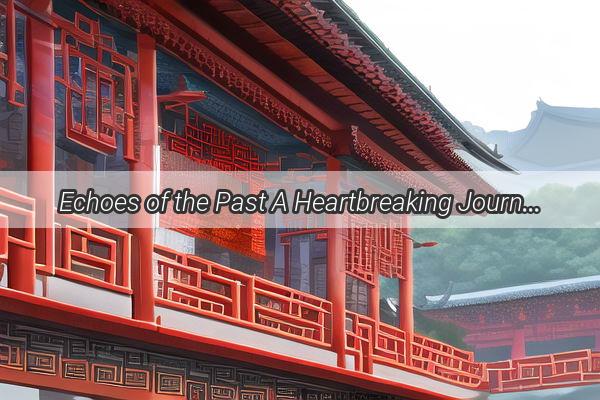Echoes of the Past A Heartbreaking Journey Through Chinas Lost Cultural Treasures
---
In a land where history breathes through every cobblestone and story unfolds in the whispers of ancient scripts, China's cultural heritage stands as a testament to its rich and storied past. Yet, amidst the splendor and majesty of its historical sites and artifacts, a somber reality casts a long shadow: the destruction of countless cultural treasures. This article delves into the heart-wrenching tales of some of the most beloved and irreplaceable artifacts that have fallen victim to time, neglect, and sometimes, deliberate vandalism.
The Silent Scream of Bronze: The Mausoleum of Emperor Qin Shi Huang and His Terracotta Army
The mausoleum of Emperor Qin Shi Huang, the first emperor of a unified China, is one of the most iconic symbols of the nation's ancient might. Yet, the 8,000 life-size Terracotta warriors that stood guard have been no match for the ravages of time and treasure hunters. Over the centuries, many of these clay soldiers have been looted and sold on the black market, their intricate details lost to history.
The Fragile Beauty of Jade: The Han Dynasty's Lament
The Han Dynasty, renowned for its exquisite craftsmanship, produced some of the most stunning jade artifacts ever crafted. However, these delicate pieces, with their intricate carvings and vibrant hues, have faced their own battles. The tomb of Emperor Wu of Han, for instance, was ransacked, leaving behind only fragmented memories of its former glory.
The Vanishing Paintings: The Murals of the Mogao Caves

The Mogao Caves, a series of Buddhist temples and shrines carved into the cliffs of the Dunhuang region, were once home to some of the most vibrant and detailed murals in the world. These paintings, depicting scenes from Buddhist mythology and everyday life, have suffered from environmental degradation and the constant threat of vandalism. The colors have faded, and many of the figures have been stolen or damaged beyond repair.
The Ruins of Great Walls: A Symbol of Strength and Sorrow
China's Great Wall, a symbol of the nation's indomitable spirit, has also faced its share of destruction. Over the centuries, the wall has been looted for bricks and stones, and portions have been dismantled for construction materials. The once majestic structure now stands as a reminder of both its historical significance and the fragility of cultural heritage.
The Lost Libraries: The Buddhist Texts of Dunhuang
The Dunhuang Library Cave, discovered in 1900, was a treasure trove of Buddhist texts, historical documents, and art. However, the discovery was not a cause for celebration; it was the beginning of a tragic loss. The British explorer Aurel Stein, among others, carted away thousands of scrolls and manuscripts, leaving behind a cultural void that can never be filled.
A Call to Preserve: The Legacy of Lost Treasures
The destruction of China's cultural heritage is a loss that resonates through the ages. These artifacts are more than mere relics; they are windows into the soul of a civilization, a connection to the past that cannot be replicated or replaced. As we reflect on the lost treasures, it is a somber reminder of the importance of preserving our cultural heritage for future generations.
Efforts are being made to protect what remains. Conservationists and archaeologists work tirelessly to restore and protect the surviving artifacts, while governments and organizations strive to enforce stricter regulations against the illegal trade of cultural property. However, the task is immense, and the clock is ticking.
In the end, the loss of these cultural treasures is a stark reminder of the ephemeral nature of human endeavor. They serve as a solemn testament to the fragility of our world and the importance of cherishing and protecting our shared heritage. Let us hope that the echoes of the past will continue to resonate, and that the future will witness a renewed commitment to preserving the invaluable legacy that has been entrusted to us.








